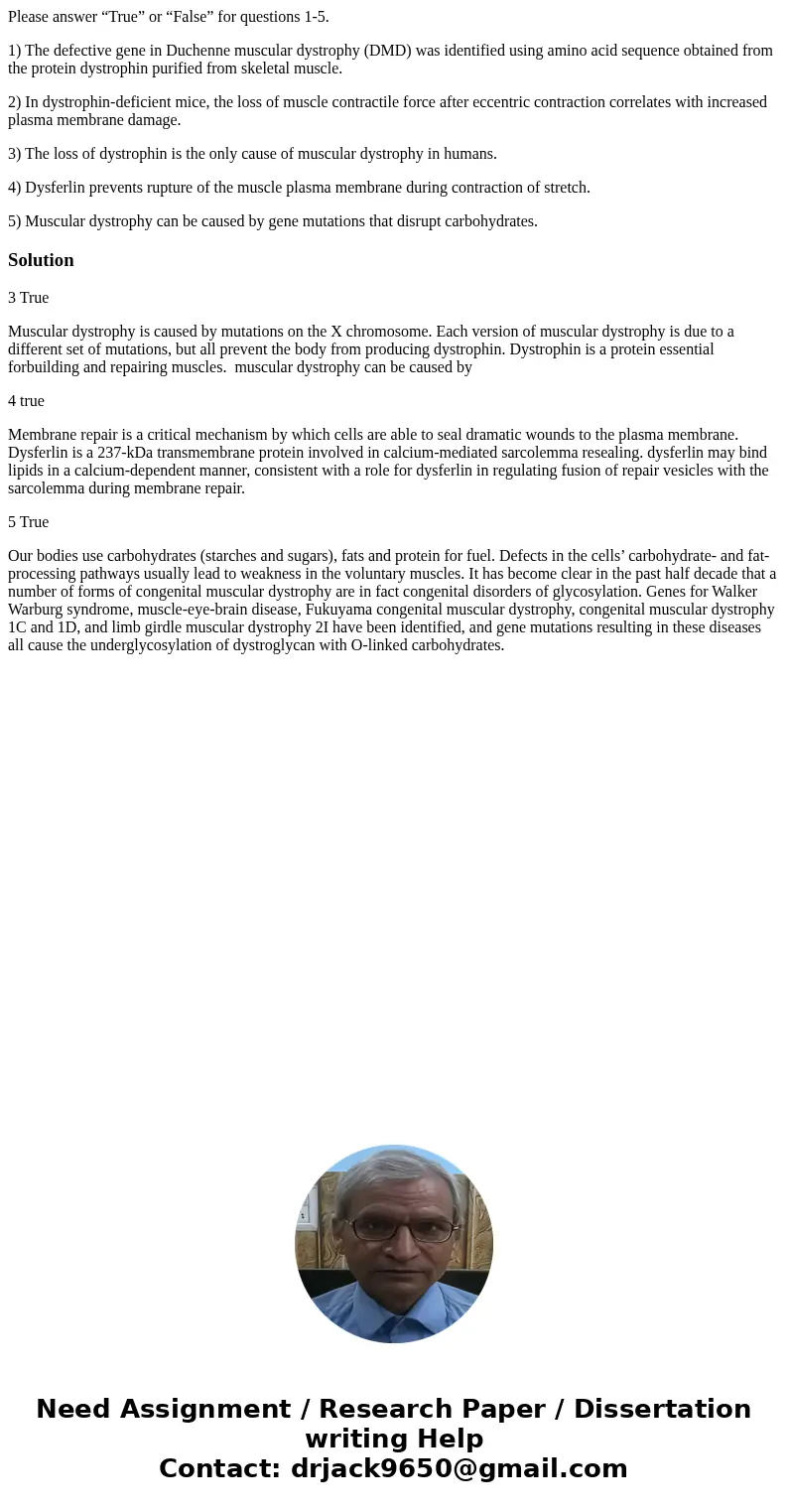Please answer True or False for questions 15 1 The defective
Please answer “True” or “False” for questions 1-5.
1) The defective gene in Duchenne muscular dystrophy (DMD) was identified using amino acid sequence obtained from the protein dystrophin purified from skeletal muscle.
2) In dystrophin-deficient mice, the loss of muscle contractile force after eccentric contraction correlates with increased plasma membrane damage.
3) The loss of dystrophin is the only cause of muscular dystrophy in humans.
4) Dysferlin prevents rupture of the muscle plasma membrane during contraction of stretch.
5) Muscular dystrophy can be caused by gene mutations that disrupt carbohydrates.
Solution
3 True
Muscular dystrophy is caused by mutations on the X chromosome. Each version of muscular dystrophy is due to a different set of mutations, but all prevent the body from producing dystrophin. Dystrophin is a protein essential forbuilding and repairing muscles. muscular dystrophy can be caused by
4 true
Membrane repair is a critical mechanism by which cells are able to seal dramatic wounds to the plasma membrane. Dysferlin is a 237-kDa transmembrane protein involved in calcium-mediated sarcolemma resealing. dysferlin may bind lipids in a calcium-dependent manner, consistent with a role for dysferlin in regulating fusion of repair vesicles with the sarcolemma during membrane repair.
5 True
Our bodies use carbohydrates (starches and sugars), fats and protein for fuel. Defects in the cells’ carbohydrate- and fat-processing pathways usually lead to weakness in the voluntary muscles. It has become clear in the past half decade that a number of forms of congenital muscular dystrophy are in fact congenital disorders of glycosylation. Genes for Walker Warburg syndrome, muscle-eye-brain disease, Fukuyama congenital muscular dystrophy, congenital muscular dystrophy 1C and 1D, and limb girdle muscular dystrophy 2I have been identified, and gene mutations resulting in these diseases all cause the underglycosylation of dystroglycan with O-linked carbohydrates.

 Homework Sourse
Homework Sourse